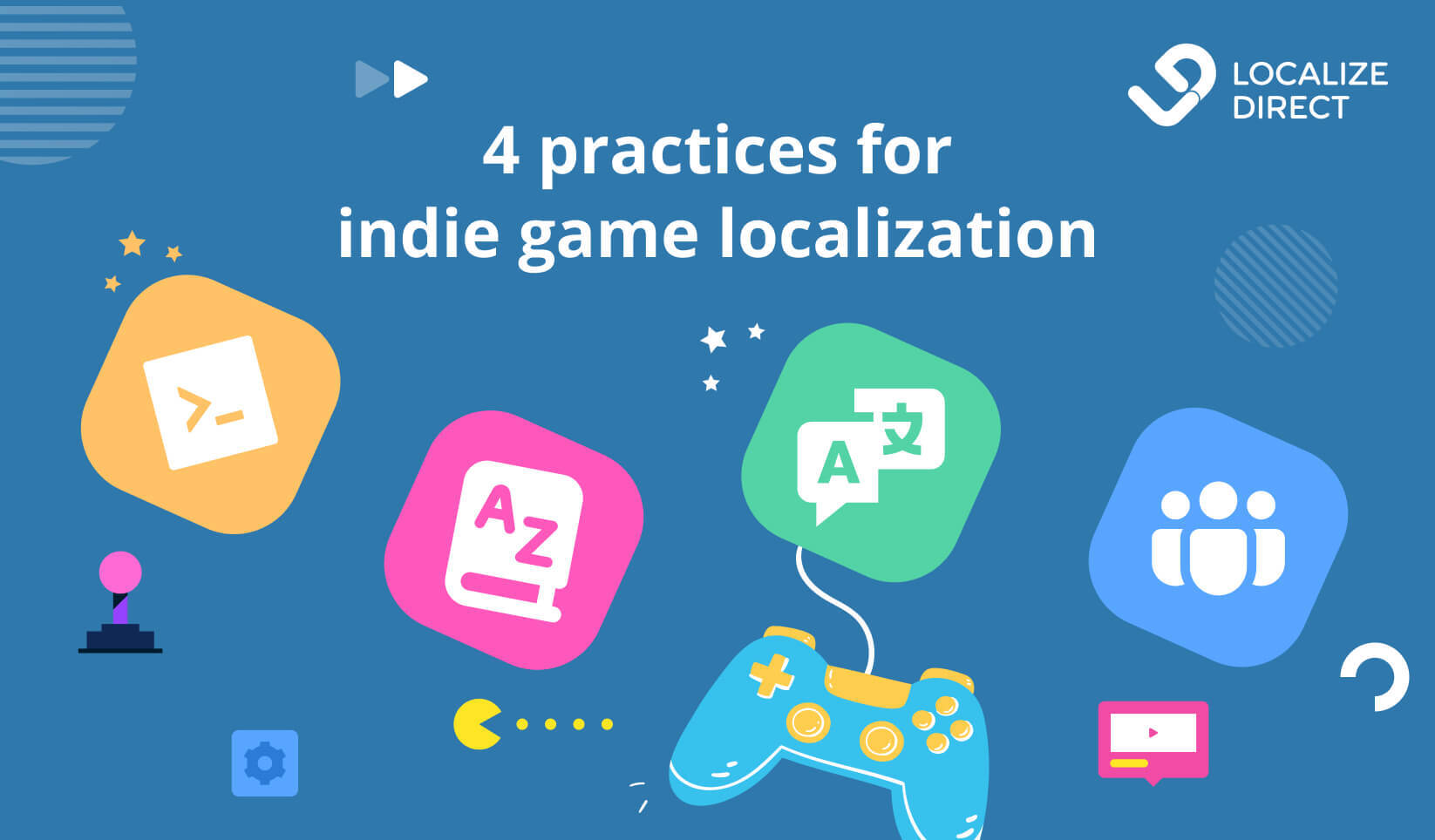How to set yourself up for a successful game localization project
Getting ready to localize your game? Learn what to consider before starting a localization project, from setting up your file to creating a style guide.

Internationalization is the practice of preparing a product for localization. Failing to internationalize means game localization need to stop until indie developers dive into the code and get things ready. But if you follow good internationalization principles throughout game development cycle, you’ll never need to waste time on it later — it’ll just be the way your team operates.
Bonus tip: Don’t use flags to denote languages. Most countries have significant populations that speak other languages, and using flags to represent one language fails to include those people.
>> Learn more about string translation in gaming
When you and your team have likely spent years working on a new game, it’s only natural to want to share it with as many people as possible. But if you’re localizing with minimal resources, casting too wide a net will quickly exhaust your budget.
Instead, assess the ROI (return on investment) of entering your target markets. Look at your potential revenue in these markets, factoring in variables such as cost per user, genre popularity, marketing expenses, and pricing strategies. Then, look at the translation expenses — how much will it cost to localize your game for these regions? The relationship between these findings is your ROI.
Focus your localization efforts on the markets promising the highest ROI. You’ll ensure that your resources are put to optimal use, bringing your game to the audiences most likely to provide you with the largest reward in return for your efforts.
>> Discover the top languages for game localization
When localizing an indie game, it’s crucial to adapt your strategy to the game’s genre. Each genre has unique features and player expectations that affect localization. Some games might only need UI/UX elements translated, especially if they rely on visuals instead of text. Other games may require a full adaptation, including the fictional world, characters, and dialogue.
For simple puzzle games or mobile arcade games without dialogues and characters, minimal localization suffices. Translate menus, UI elements, and game descriptions on platforms like the App Store or Steam. Additionally, localizing marketing materials and working with local marketing agencies helps reach your target audience.
Genres: Casual mobile games, visual brain puzzles, non-narrative racing games, non-narrative strategy games.
Games with storylines and custom terminology require more effort. Prepare style guides, glossaries, and other materials before translation. Allow translators time to familiarize themselves with the game and use localization tools that include context screenshots. Involve native speakers in localization QA checks and consider domain experts for specific terms.
Genres: Story-rich strategy games, shooters, adventures, sports simulation games.
For games with a complex fictional universe and distinctive characters, extensive localization is needed. Adapt the game’s context to the target audience by changing culturally unfamiliar names and revising sensitive topics. Integrate the localization team with the development team for accurate translations and story transcreation.
Genres: RPGs, MMORPGs, complex adventure and detective games, action-adventure games, stealth games, sandbox games.
>> Learn more about localization strategies for different game genres.
With limited resources and smaller team sizes, smooth collaboration becomes critical to efficient work. Uniting all stakeholders in a centralized localization workspace enables everyone to push and pull content as needed, provide feedback or ask questions, and monitor localization progress — all without having to swap over to another platform.
Centralized localization platforms also help manage translation memories and glossaries, making future updates and new localizations more efficient, ensuring consistency and accuracy across different languages.
Getting ready to localize your game? Learn what to consider before starting a localization project, from setting up your file to creating a style guide.
Some Asian countries are absolute global leaders in the gaming industry: for instance, China, Japan, and South Korea are all in the top 4 by revenue after the US. Other markets (Southeast Asia and the Middle East) are some of the most rapidly growing ones, especially in the sector of mobile gaming.
